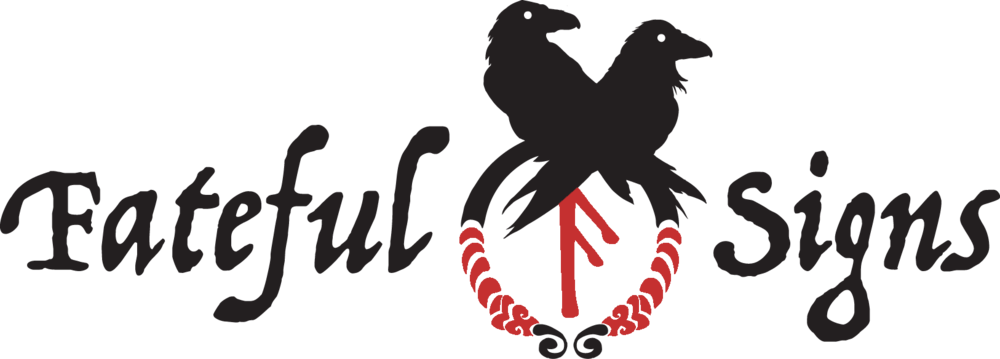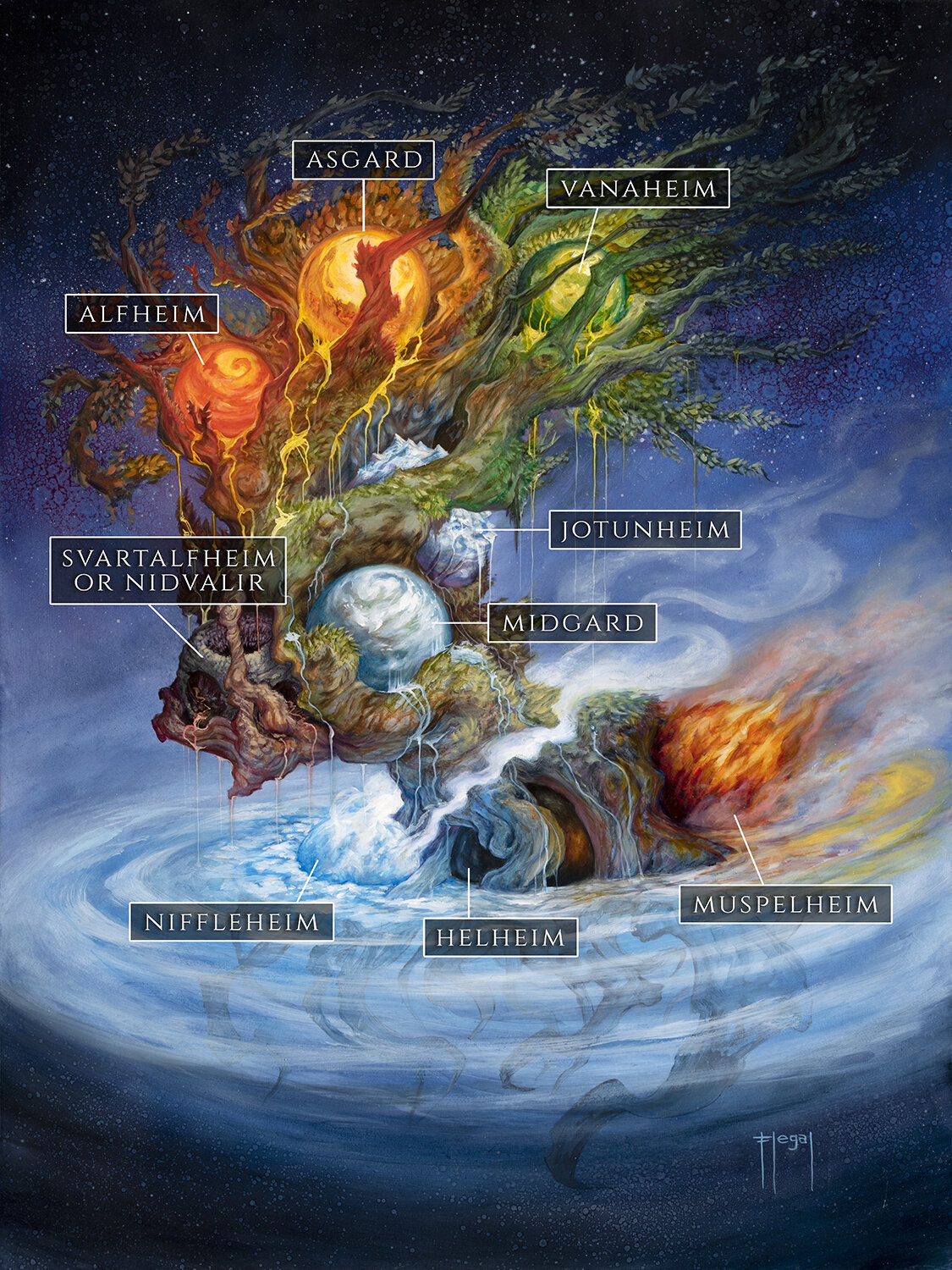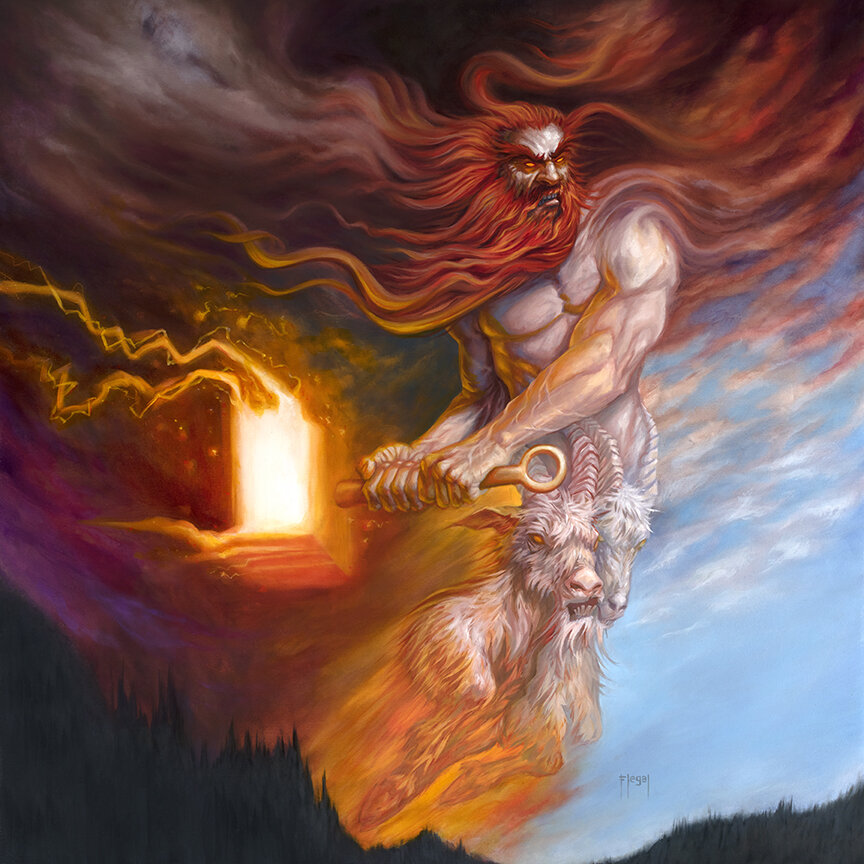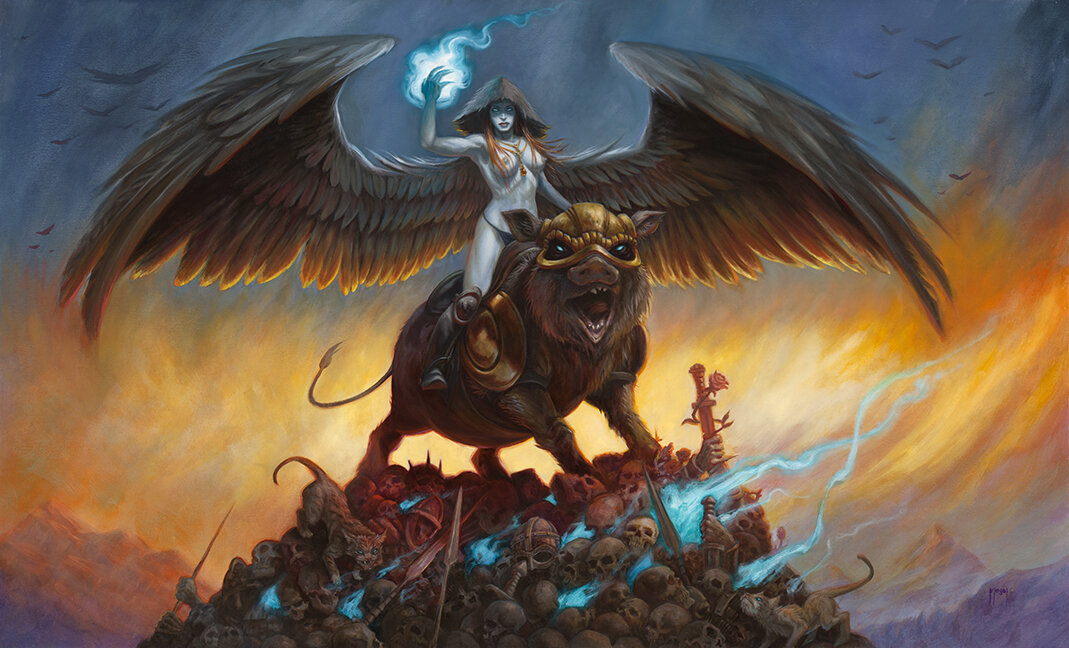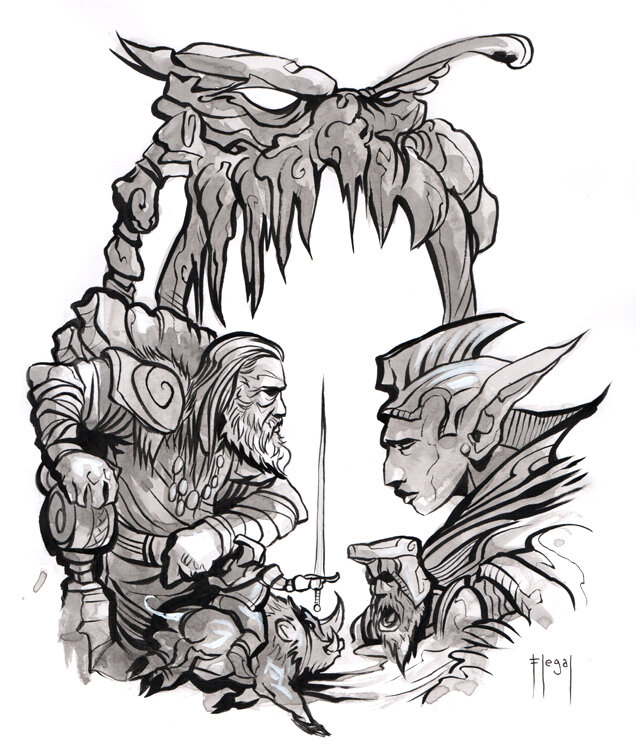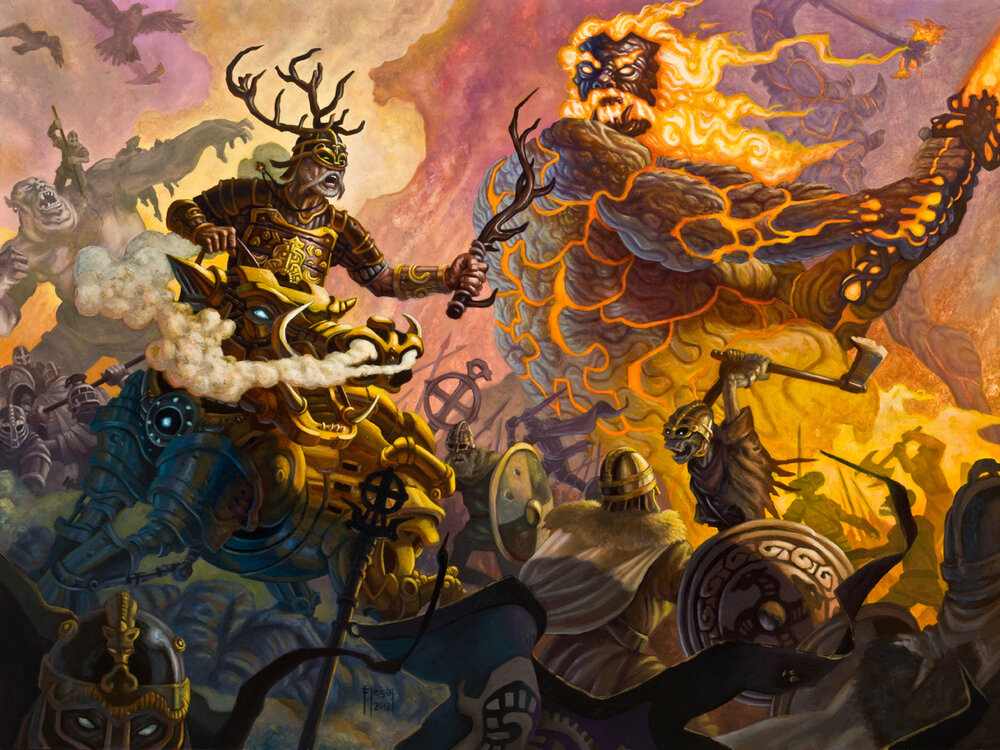According to the Vikings, the cosmos is made up of Nine Worlds that are all supported by Yggdrasil, the World Tree, as it floats through Ginnungagap, the great void. Each of the Nine Worlds has its own key elements in Norse Mythology. All together they are Asgard, Vanaheim, Alfheim, Jotunheim, Midgard, Svartalfheim (or Nidvalir), Niffleheim, Helheim, and Muspelheim.
A Note About Viking Names
The Old Norse word “gard” means enclosure or fortress. Asgard can be broken into “the fortress of the As,” the shortened word for the Aesir, the name of the gods. Midgard means “the middle fortress.” Heim is the Old Norse word for “home.” So Alfheim or Jotunheim mean “Elf-home” and “Giant-home” respectively.
Thor flies through the sky!
Asgard
Asgard is the home of Odin, Thor, Frigg, and most of the other gods. Specifically, it is the home of the Aesir, Odin’s tribe of gods. All the gods who live here also have their individual homes, the most famous being Valhala where half of those who die in battle reside until Ragnarok, the twilight of the gods.
Vanaheim
Vanaheim is the home of Frey, Freya, and Njord, as well as the other members of the Vanic tribe of gods. There is much less information on the Vanic gods, generally considered to be nature gods, although there is a lot of crossover. Freya’s hall Folkvanger is in Vanaheim where the other half of honored dead warriors go when they die.
Freya claims the dead in Folkvanger!
The Voluspa asks, “How fare the elves?”
Alfheim
Alfheim is the home of the light elves. The god Frey was made king of Alfheim for his birthday. Light elves have been portrayed many different ways throughout folklore and fiction. At their earliest, the elves were the spirits of the land and of the ancestors who were associated with the land.
Jotunheim
The land of giants, great spirits of frost and mountains. An untamed land full of wild folk and great dangers. The giants were often capable of magic and feats that rivaled that of the gods. Jotenheim was considered close to Midgard, where nature often finds its way into lands close to civilization.
Hrym is the leader of the giants!
Odin’s Ravens look out over Midgard!
Midgard
Middle Earth, the middle realm in the cosmos and home to us human folk.
Svartalfheim/Nidvalir
Svartalfheim means “Dark Elf Home.” While the dark elves have been immortalized by a great number of famous fantasy characters, the Old Norse used the term interchangeably with the term dwarf. Nidvalir is also referred to as one of the Nine Worlds, and it is the home of the dwarves. The Vikings imagined this realm as a deep realm beneath the earth and the mountains where spirits crafted mighty things for both gods and glory.
Motsognir, the first dwarf!
Niddhog, the great dragon!
Niffleheim
The world of ice and mist. The primordial lakes that feed Yggdrasil, the world tree, start their flow in Niffleheim. A land of great snakes and mighty wyrms, the land and mist are both thought to be poisonous. The legendary dragon Niddhog lives here gnawing at the roots of the world tree and feasting on the souls of murderers. Sometimes this land is called Nifflehel.
Helheim
More commonly called simply Hel, this is the realm of the dead. In earlier sources it is the land of all of the dead, but in later sources it is specifically the resting place of those who die outside of battle, so really, most people. Helheim is cold, and said to be “to the North.” The ruler of the underworld is a goddess who shares a name with her world, Hel. Her name is often anglicized to be Hela, which helps mark some distinction between the goddess and her kingdom.
Hel on her throne!
Frey battles Surt at Ragnarok!
Muspelheim
The primordial realm of fire, one of the first worlds at the dawn of creation. Muspelheim and Niffleheim, the domains of fire and ice, collided at the very beginning; and out of their collision sprung the world tree and the first being, Ymir. The fire kingdom is ruled by Surt, the king of fire giants, although a more accurate mental picture for fire giants might be the images conjured by the modern view of fire demons.
Yggdrasil, the World Tree
If you would like a Viking art print of “Yggdrasil, the World Tree,” there are several versions you can choose from. There is a poster sized print with all of the Nine Worlds labeled, that measures 16” x 20.” “Yggdrasil, the World Tree” also comes as a smaller open edition viking art print that measures 12” x 16.” You can also get “Yggdrasil, the World Tree,” on METAL! The limited edition archival print of “Yggdrasil, the World Tree,” has SOLD OUT.
Sam Flegal is the creative mind behind Fateful Signs. He has been a freelance Illustrator since 2009. He likes to work in oil paint and with brush and ink, focusing on exaggerated expressions and detail. Sam lives in Nashville, Tenn., with his lovely wife and daughter. He makes art almost everyday and is a very lucky man.
